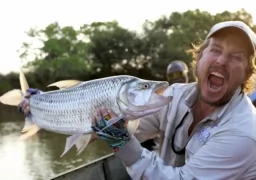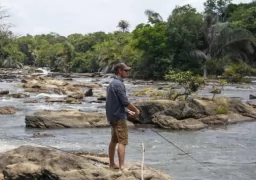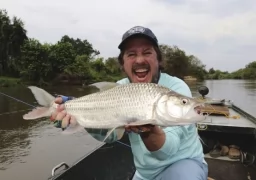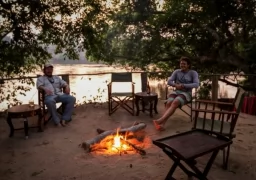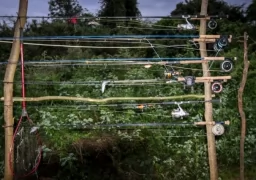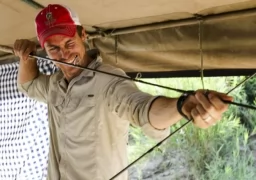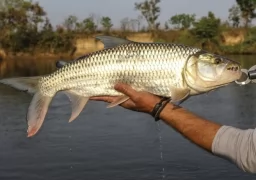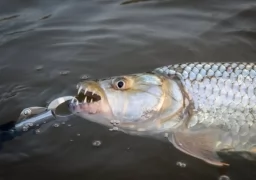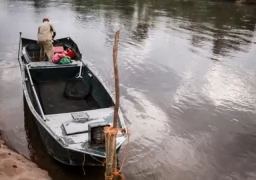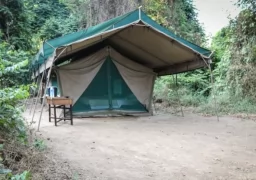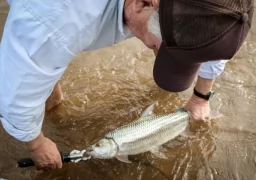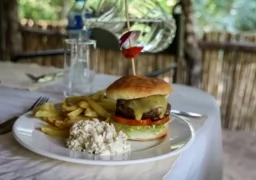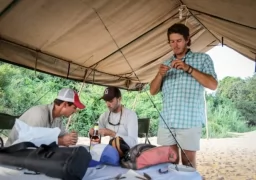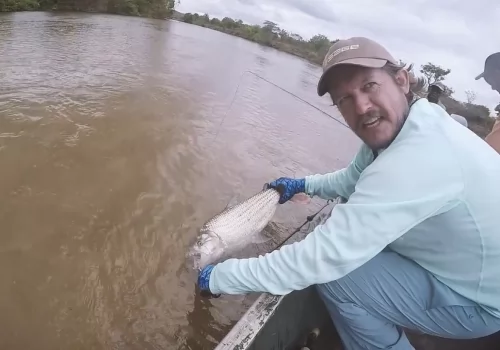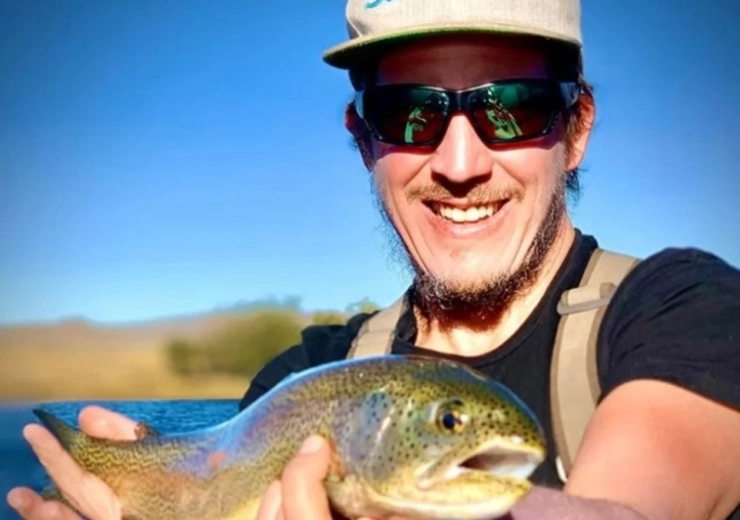NEWS & REPORTS
The Amazing Tigerfish Part II
At 7 am I arrived at Dar es Salaam, capital of Tanzania. This country has 40 millions of people. Out of that number, the majority are black guys and native to Tanzania. I would say that only one percent of people who come to this country do it for business and/or pleasure. And I was one of them!
I spent one night in this city to recover from the long flight and at 7 am the following morning I was picked up to fly in a small Sesna to the middle of the jungle. The flight was supposed to be just one stop and about 3 hours of flying with 12 people who would be flying to Chimoro, too.
Out of the people in that small airplane, four of us were going fly fishing to the Kilombero Reserve. This reserve is a hunting destination for big game and also has two of the most interesting rivers for Tigerfish fly fishing, the Mnyera River and the Ruhudji River.
In this reserve, African species roam freely in the plains and avid hunters can enjoy a variety of game options such as buffalo, elephant, hippos and leopards, among others.
When it comes to fishing, the reserve is home to the amazing Tigerfish, which usually ranges in size from 1 to 28lbs. The speed, strength, aerial antics and aggressive nature of the species make it a desirable option for anglers who are willing to traverse the world to come to these waters.
After the three hour flight we were picked up at a small landing area in the middle of the forest by our guides, Mark Murray and Greg. From the landing field it was another 30 minutes driving, to one of the camps where the four of us were supposed to spend half of the trip. Three nights at the Mnyera camp and 3 nights at the Ruhudji camp.
The best rod to fly fish in Tanzania for tigerfish is #8 Wage. For middle action or for people who need more skill or more training in fly fishing cast or in fly cast it could be a stronger #8 rod. Normally we use sinking lines. It could be good to have one heavy sinking line and one intermediate one. Most of the fishing is underwater with big flies, similar to the Dorado fishing, very colorful flies with iron in the front, 40 pound iron in the leader to avoid a cut in the line.
Greg had been taking really good care of us, tying all the flies and selecting the best flies for us. He also took time to explain every day the conditions of the water and its temperature, what they think the fish is was going to do, how they think the fish is going to react, if they are active or not, if the sun is complicating things or not, if the clouds are a problem or not, among other tips. That kind of assistance in the river makes a whole lot of a difference. On the other hand, we can say that these guys are top notch and very qualified. They are probably top in the rank, among other great fly fishers I’ve met during these years.
So, back to the fishing, in one of the boats it was Mark and me, and on the other it was Kubis and Jim
Every day we went out to the river for fly fishing around 8.30, 9 am. We had lunch every day in the river, all of us met there for lunch and then we fished till 5 pm in the evening, everyday.
We were fly fishing 6 days. The water was divided into 3 sections so we split the river and fished the upper side, mid side and down side of the river. During the week we used different presentations in the river, and the vegetation and the species of trees were completely different on each section. The river structure comprises fallen timber, long sand banks, steep drop-off ’s and rocky outcrops.
Fly casting from the boat was not difficult. It was a longer boat than a floating boat in Patagonia, it was not that complicated, specially because at least for us that week there was no bad wind, not that strong to make it complicated. There was enough space in between the guy at the back of the boat and the guide in the front so we both could flycast. Sometimes, depending on the wind and the position of the boat the guide on the back was supposed to lose some backcasting to get the flight on the right side, but nothing really complicated. It was interesting to get the fly in the right place but nothing really complicated.
It is good that the section for fly casting was comfortable, normally from the middle of the river to the sides of the river and with enough space to make nice fly cast and a good presentation on the casting. With bigger flies and iron in the front of the lines it would not have been that easy to do the roll cast so it was good to be able to be accurate on the fly cast.
Normally, we tried to get closer to the banks or the trees or to the structure in the water, then you strip it and you’ve got to strip very fast and long so you try to make it the longest you can and the fastest you can, even sometimes using both hands. This was an interesting difference regarding Tigerfish in Tanzania, compared to dorado fishing or other fish in saltwater.
So at the end of the day we felt the strong fly cast and all the action fly casting plus retrieving the flies very fast. I can tell you we were all very tired, asking for a warm shower and a drink to relax!!!
It was time to make our way back to the main camp where we enjoyed delicious fresh snacks, meals and drinks. We recovered our energy with great night sleeps to the sound of the wild jungle and we were ready for our next day.
Pablo Aguilo
Owner
Pointer Outfitters

